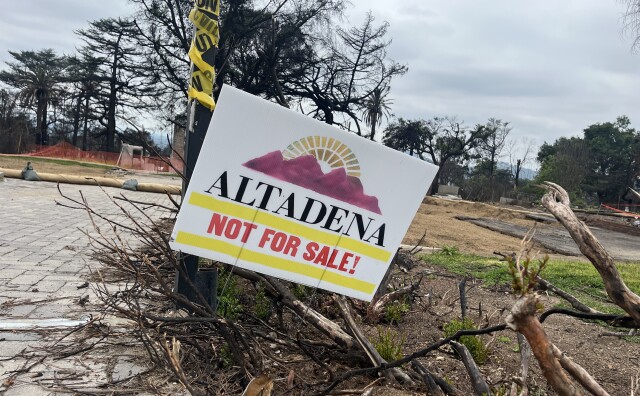Congress has cut federal funding for public media — a $3.4 million loss for LAist. We count on readers like you to protect our nonprofit newsroom. Become a monthly member and sustain local journalism.
This archival content was written, edited, and published prior to LAist's acquisition by its current owner, Southern California Public Radio ("SCPR"). Content, such as language choice and subject matter, in archival articles therefore may not align with SCPR's current editorial standards. To learn more about those standards and why we make this distinction, please click here.
Some Streets in L.A. Go More Than a Year Without Being Cleaned

Los Angeles has seemingly been devoting lots of resources to its streets lately, between its annual Great Streets makeover challenge to its relentless promotion of CicLAvia to its billion-dollar sidewalk repair program. But not all streets are created equal, and it turns out some of them don’t get cleaned nearly as frequently as others do.
Just a third of the city’s 13,891 curb miles of public streets are attended to by motorized street sweepers every week, while the remaining two-thirds are only swept when resources allow, according to an audit released Wednesday by L.A. City Controller Ron Galperin. The report estimates that the streets without posted street sweeping signs, or the city’s vast majority, might go more than a year without ever being cleaned by the city.
Not only that, but the 4,692 curb miles that do get cleaned with some regularity — those with posted street sweeping signs — are disproportionately concentrated in various regions of the city. The Bay Harbor and North Central areas (which cover most of central Los Angeles and Long Beach) get the majority of street sweepers’ attention, whereas the East and West Valleys are mostly out of luck (why are we not surprised that the Valleys get dissed even when it comes to street sweeping?). Just 14 percent of streets in the West Valley and 19 percent of streets in the East Valley have posted street sweeping signs and get cleaned on a regular basis, the audit shows.
Budget cuts are largely to blame for the oversight: The city’s Bureau of Street Services cut its staff by more than half after the last recession, and on top of that, street sweeping only accounts for 7 percent of its annual operating budget. It doesn’t help that the city’s designated routes for street sweeping haven’t changed in decades, according to the audit, which was addressed to Mayor Eric Garcetti, City Attorney Michael Feuer, and members of the City Council.
The City Controller’s office has some ideas about how to fix the problem, even on a shoestring budget. Its report recommends that the Bureau of Street Services reevaluate its routes to determine whether some streets should be cleaned less frequently in order to prioritize others that virtually never see a street sweeper. To help with this, Galperin suggested the city upgrade its technology by pulling data from GPS and using smartphone apps to optimize its cleaning routes and schedules.
As Editor-in-Chief of our newsroom, I’m extremely proud of the work our top-notch journalists are doing here at LAist. We’re doing more hard-hitting watchdog journalism than ever before — powerful reporting on the economy, elections, climate and the homelessness crisis that is making a difference in your lives. At the same time, it’s never been more difficult to maintain a paywall-free, independent news source that informs, inspires, and engages everyone.
Simply put, we cannot do this essential work without your help. Federal funding for public media has been clawed back by Congress and that means LAist has lost $3.4 million in federal funding over the next two years. So we’re asking for your help. LAist has been there for you and we’re asking you to be here for us.
We rely on donations from readers like you to stay independent, which keeps our nonprofit newsroom strong and accountable to you.
No matter where you stand on the political spectrum, press freedom is at the core of keeping our nation free and fair. And as the landscape of free press changes, LAist will remain a voice you know and trust, but the amount of reader support we receive will help determine how strong of a newsroom we are going forward to cover the important news from our community.
Please take action today to support your trusted source for local news with a donation that makes sense for your budget.
Thank you for your generous support and believing in independent news.

-
People moving to Los Angeles are regularly baffled by the region’s refrigerator-less apartments. They’ll soon be a thing of the past.
-
Experts say students shouldn't readily forgo federal aid. But a California-only program may be a good alternative in some cases.
-
The program is for customers in communities that may not be able to afford turf removal or water-saving upgrades.
-
More than half of sales through September have been to corporate developers. Grassroots community efforts continue to work to combat the trend.
-
The bill would increase penalties for metal recyclers who possess or purchase metal used in public infrastructure.
-
The new ordinance applies to certain grocers operating in the city and has led to some self-checkout lanes to shutter.







